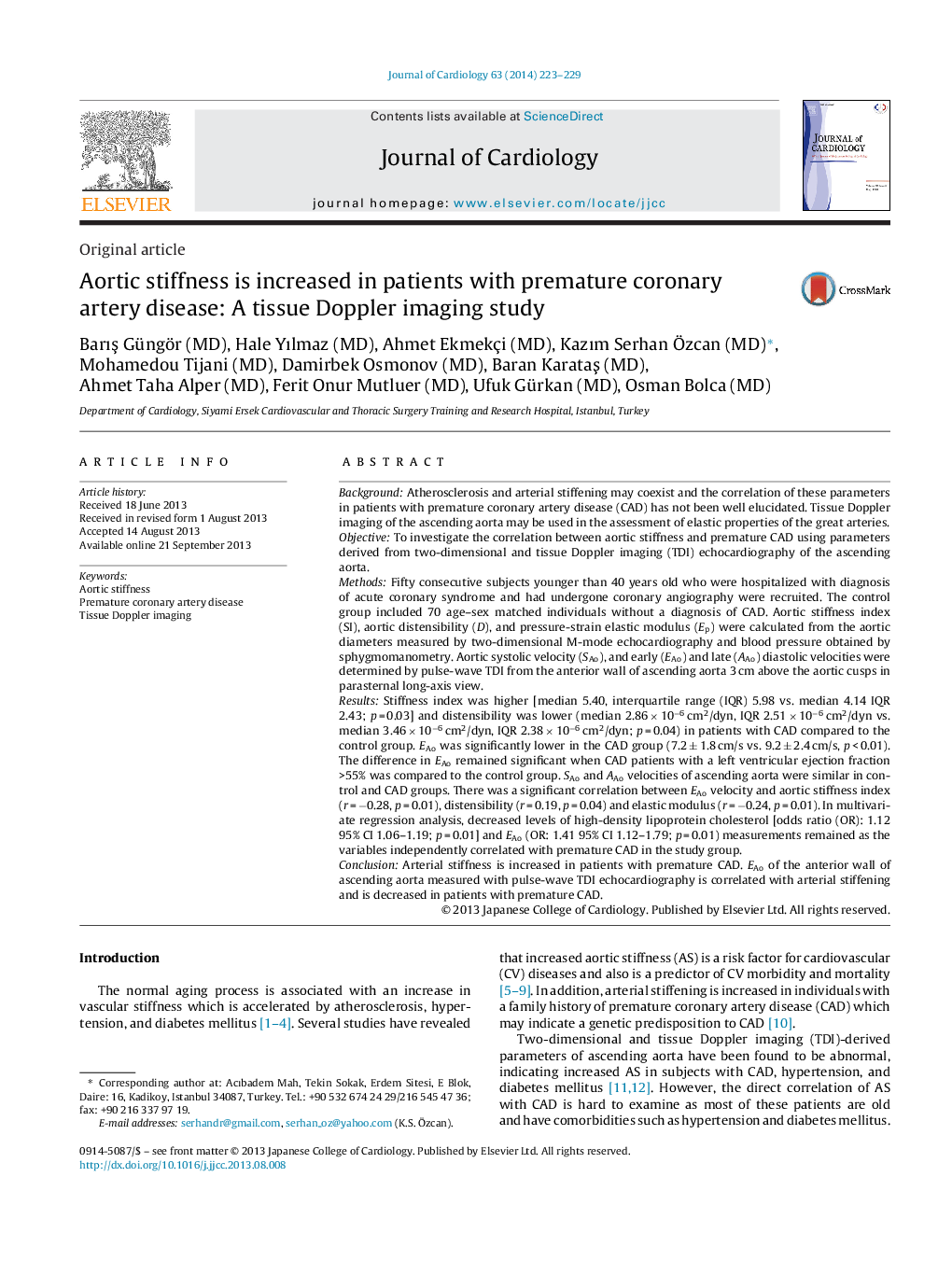| Article ID | Journal | Published Year | Pages | File Type |
|---|---|---|---|---|
| 2963055 | Journal of Cardiology | 2014 | 7 Pages |
BackgroundAtherosclerosis and arterial stiffening may coexist and the correlation of these parameters in patients with premature coronary artery disease (CAD) has not been well elucidated. Tissue Doppler imaging of the ascending aorta may be used in the assessment of elastic properties of the great arteries.ObjectiveTo investigate the correlation between aortic stiffness and premature CAD using parameters derived from two-dimensional and tissue Doppler imaging (TDI) echocardiography of the ascending aorta.MethodsFifty consecutive subjects younger than 40 years old who were hospitalized with diagnosis of acute coronary syndrome and had undergone coronary angiography were recruited. The control group included 70 age–sex matched individuals without a diagnosis of CAD. Aortic stiffness index (SI), aortic distensibility (D), and pressure-strain elastic modulus (Ep) were calculated from the aortic diameters measured by two-dimensional M-mode echocardiography and blood pressure obtained by sphygmomanometry. Aortic systolic velocity (SAo), and early (EAo) and late (AAo) diastolic velocities were determined by pulse-wave TDI from the anterior wall of ascending aorta 3 cm above the aortic cusps in parasternal long-axis view.ResultsStiffness index was higher [median 5.40, interquartile range (IQR) 5.98 vs. median 4.14 IQR 2.43; p = 0.03] and distensibility was lower (median 2.86 × 10−6 cm2/dyn, IQR 2.51 × 10−6 cm2/dyn vs. median 3.46 × 10−6 cm2/dyn, IQR 2.38 × 10−6 cm2/dyn; p = 0.04) in patients with CAD compared to the control group. EAo was significantly lower in the CAD group (7.2 ± 1.8 cm/s vs. 9.2 ± 2.4 cm/s, p < 0.01). The difference in EAo remained significant when CAD patients with a left ventricular ejection fraction >55% was compared to the control group. SAo and AAo velocities of ascending aorta were similar in control and CAD groups. There was a significant correlation between EAo velocity and aortic stiffness index (r = −0.28, p = 0.01), distensibility (r = 0.19, p = 0.04) and elastic modulus (r = −0.24, p = 0.01). In multivariate regression analysis, decreased levels of high-density lipoprotein cholesterol [odds ratio (OR): 1.12 95% CI 1.06–1.19; p = 0.01] and EAo (OR: 1.41 95% CI 1.12–1.79; p = 0.01) measurements remained as the variables independently correlated with premature CAD in the study group.ConclusionArterial stiffness is increased in patients with premature CAD. EAo of the anterior wall of ascending aorta measured with pulse-wave TDI echocardiography is correlated with arterial stiffening and is decreased in patients with premature CAD.
